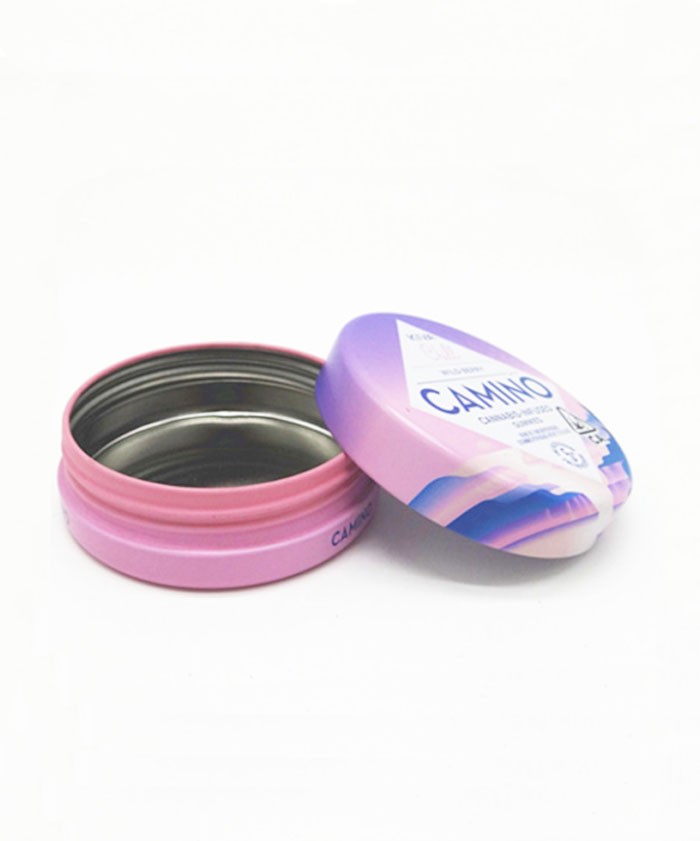Introduction
Child safety is of utmost importance, and when it comes to storing potentially harmful products, child-resistant tins play a vital role in preventing accidental exposure or ingestion. These specialized containers are designed with specific features to make it difficult for young children to open them. In this article, we will explore the safety aspects of child-resistant tins and examine how they provide an extra layer of protection for children in various environments.

Purpose of Child-Resistant Tins
Child-resistant tins are explicitly engineered to reduce the risk of accidental access to potentially harmful substances. They feature innovative mechanisms, such as push-and-turn caps, combination locks, or sliding mechanisms, which require a certain level of dexterity and comprehension to open. The aim is to create a barrier that is challenging for young children to overcome while allowing adults to access the contents with relative ease.
Stringent Testing and Regulations
Child-resistant tins undergo rigorous testing to ensure their effectiveness in preventing access by young children. Manufacturers adhere to strict standards and regulations set by relevant authorities, such as the Consumer Product Safety Commission (CPSC) in the United States. These standards encompass various aspects, including child-resistant closures, resistance to tampering, and labeling requirements. Through this comprehensive testing and regulation, child-resistant tins are designed to meet the highest safety standards.
Age-Specific Cognitive Abilities
Child-resistant tins take into account the cognitive development of young children. They are designed to be challenging for children under a certain age while allowing adults or older children to open them with relative ease. The mechanisms used require a level of manual dexterity, strength, and understanding of sequential steps that younger children typically do not possess. By considering age-specific cognitive abilities, child-resistant tins ensure that only those who can comprehend the opening mechanisms can access the contents.
Preventing Accidental Ingestion
One of the primary safety concerns for children is accidental ingestion of harmful substances. Child-resistant tins provide an extra layer of protection against such incidents. By making it difficult for children to open the containers, they significantly reduce the chances of accidental exposure to medications, cleaning chemicals, or other hazardous materials. Child-resistant tins act as a barrier, giving caregivers additional time to intervene and prevent potentially dangerous situations.
Mitigating Poisoning Risks
Child-resistant tins effectively mitigate the risks of poisoning for young children. These containers are particularly crucial when storing medications, as accidental ingestion of drugs intended for adults or in improper doses can have severe consequences. The child-resistant features of these tins, coupled with responsible storage practices, help ensure that children cannot access medications without adult supervision, reducing the likelihood of accidental poisoning incidents.
Safety in Multiple Environments
Child-resistant tins are versatile and can be used in various environments to enhance child safety. They are commonly employed in homes to store medications, cleaning chemicals, and personal care products. Additionally, child-resistant tins find utility in schools, childcare centers, healthcare facilities, and public spaces where potentially harmful substances need to be securely stored. These containers provide consistent safety measures across different settings, offering peace of mind to parents, caregivers, and the general public.
Supervision and Education
While child-resistant tins are an effective safety measure, they should not replace proper supervision and education. It is crucial for parents, caregivers, and adults to remain vigilant and keep potentially hazardous substances out of reach of children, even if stored in child-resistant tins. Educating children about the importance of not accessing or ingesting these products, coupled with responsible storage practices, further enhances overall safety.
Limitations and Individual Variations
It is important to acknowledge that no safety measure is foolproof, and child-resistant tins are no exception. Although they are designed to be challenging for young children, there is still a possibility that some children may eventually figure out how to open them. Each child's development and abilities can vary, and some may possess the necessary skills to overcome the child-resistant mechanisms. Therefore, proper adult supervision and adherence to storage guidelines are essential, even when using child-resistant tins.
Regular Safety Assessments
Manufacturers of child-resistant tins continuously evaluate and improve the safety features of their products. They stay abreast of advancements in child-resistant technology, ensuring that their containers remain effective and reliable. Regular safety assessments and feedback from consumers contribute to ongoing enhancements, further strengthening the safety measures implemented by child-resistant tins.
Public Health Impact
The use of child-resistant tins has had a significant positive impact on public health. Over the years, these containers have helped reduce the number of accidental ingestions and poisonings among young children. By providing an additional safeguard, child-resistant tins contribute to overall child safety, promoting healthier and safer environments.
Conclusion
Child-resistant tins are a valuable safety measure that significantly reduces the risk of accidental exposure and ingestion for young children. Through stringent testing, age-specific considerations, and adherence to regulations, these containers provide an effective barrier against access to potentially harmful substances. While child-resistant tins enhance child safety, it is essential to combine their use with responsible storage practices, supervision, and education. By utilizing child-resistant tins and implementing comprehensive safety measures, we can create safer environments for children and reduce the occurrence of accidents and poisonings.




Comments
Please Join Us to post.
0